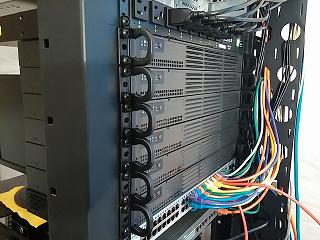|
Sanify Cluster is a network storage product accessible via
ethernet using the standard iSCSI protocol. Sanify provides highly
available primary storage, not simply a backup of your data. A
Sanify storage area network (SAN) makes it incredibly easy to create
and administer dependable virtual disk drives which are accessible
over your network from nearly any operating system running on any
hardware or virtual machine.

Sanify differs from virtually every other redundant storage
solution in that it is designed to never degrade when faults occur.
Sanify is completely immune to transient faults like network and power
failures. Unlike typical RAID solutions, a Sanify cluster isn't
controlled by, and does not depend upon, any one piece of
hardware. Even the most basic configuration has no single point of
failure, and larger clusters can even be configured so that they have
no dual points of failure.
Sanify primary storage makes it virtually impossible to lose your
data due to normal hardware failure. At Sanify we regularly encounter
people who have had total primary data loss when using RAID storage.
Generally, the scenario goes like this: First a drive fails and the
array degrades, but either no one is notified that it degraded, or the
notification went unnoticed. Second, another drive fails. It's a
trip to Walmart or the like to obtain something, anything that
will work, then attempt to reinstall and recover from a backup.
Sanify Cluster typically provides better data integrity when
hardware fails by avoiding the need to restore from backups. If loss
of all recent data, downtime measured in days, heroic IT effort to get
back up and running, less than ideal replacement hardware and all the
associated costs aren't bad enough, consider that backups generally
aren't perfect. Experience shows that almost no one ever tests to
make sure everything important is getting backed up, or that the
backups aren't corrupt. Many people are surprised to find out that a
backup of a running system is probably a blurry copy of the original.
Although sophisticated software can synchronize at the moment a
snapshot is taken, this process is not trivial and so most systems
must instead try to recover as much as possible from corrupt storage.
Sanify strongly encourages taking offsite backups, since even a
somewhat corrupt backup is far better than complete data loss.
However, given the typical quality of backups, there is a strong case
for making sure primary storage doesn't fail in the first place.
|
|

